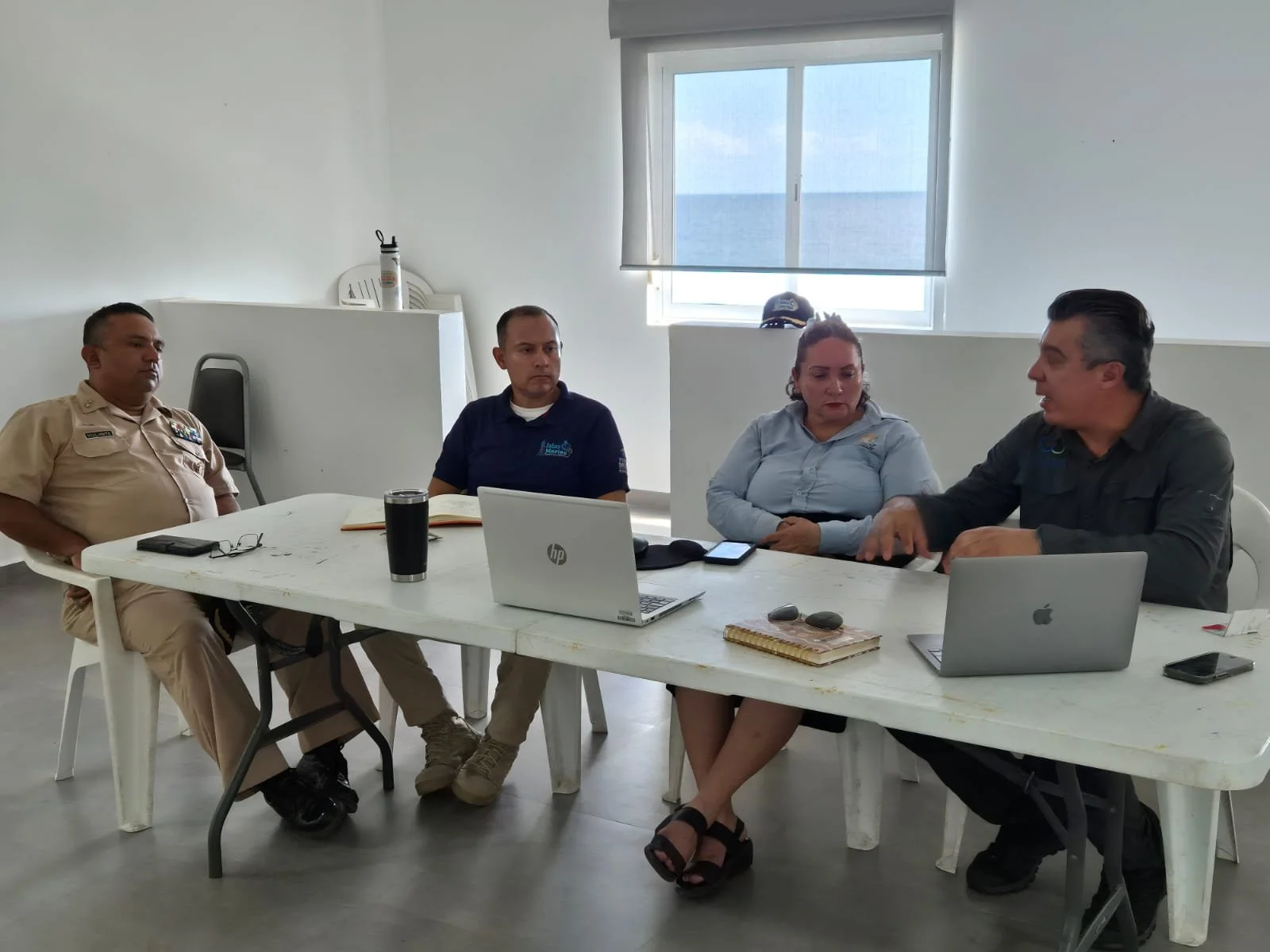GC Protects Mexico’s Newest National Marine Park ‘No Take’ Zone
August has been a busy month in the Islas Marías Biosphere Reserve (RBIM), highlighting a series of coordinated actions involving personnel from the Islas Marías Naval Sector, the Coast Guard, ENSAR personnel, fisheries officers, federal CONAPESCA officers, and RBIM personnel to address one of the greatest threats to marine biodiversity in this protected natural area: illegal, unregulated, and undocumented fishing (IUU).
Illegal fishing is a major scourge worldwide, and Mexico is no exception. Some studies suggest that 20% of global catches come from illegal, unregulated, and undocumented fishing, while in Mexico, this percentage is alarmingly high, at 40% of total catches.
All of this not only jeopardizes the viability of species to maintain healthy populations but also puts at risk the livelihoods of those communities and fishermen who strive to fish legally to generate value for their products and, with it, sustained development and well-being for their families and communities.
In recent days, with the help of the Marine Monitor (M2) deployed in the archipelago as part of the Global Marine Parks Defense strategy, it has been possible to detect in real time, 24/7, vessels entering the protected area to fish for different species, notably sharks, conch, and tuna.
The Marine Monitor M2 display shows vessel trajectories within the RBIM.
This technology provides information 24/7/365 to the authorities responsible for the protection, management, surveillance, and inspection of the Reserve. Thanks to the leadership and commitment of the authorities present at the site, effective actions have been taken to detect and intercept commercial and recreational fishing vessels fishing illegally within the boundaries of the protected area, in violation of the regulations that protect these exceptional spaces.
M2 Marine Monitoring System deployed in the Islas Marias.
Each of these actions has been documented by Reserve staff and the Naval Sector, where we have witnessed an exceptional response to stop potential negative impacts on the populations of species that are being targeted by this fishing, as well as great performance by the authorities in charge of inspection and surveillance in the RBIM, in identifying the vessels and activating rapid response protocols for the timely detention of such activities and their subsequent prosecution.
It is important to remember that the RBIM is listed as a UNESCO World Heritage Site and an MAB Reserve, which represents a worldwide recognition and commitment. To achieve effective protection of the conservation objectives and the Outstanding Unique Value of this Site, the management program establishes that fishing activities of any kind are totally prohibited throughout the Reserve.
This protection will ensure that, in the medium term, species of ecological importance, as well as those of commercial and recreational importance, recover and that a spillover effect occurs outside the boundaries of the protected natural area, allowing and promoting legal and regulated fishing under good practice schemes.
Global Conservation congratulates the authorities on the work they are doing to ensure, through the application and enforcement of the law, the preservation of marine biodiversity in the area for present and future generations.
Poachers are detained and questioned following their illegal take of tuna and sharks within a biosphere reserve.
We will continue to support the strengthening of the Reserve's staff capacities, as well as the development of lines of action to ensure excellent institutional coordination, maintain the current effort—or increase it—to ensure that the activities carried out in the Reserve are those permitted, and increase the deployment of technology to provide real-time "eyes" on other areas of the protected area.
The GC Director for Mexico (far right) participated in a coordination meeting with CONANP and SEMAR.
In addition, as part of GC's accompaniment and support, various activities were carried out together with Reserve and Navy personnel for the relocation of the Marine Monitor equipment, as well as a series of working sessions between the RBIM management to review the collaboration plan and next steps; introductory and training sessions for personnel assigned to this ANP on the management of the Marine Monitor system; and the adoption of the Earthranger software in order to systematize the collection of information resulting from the various and multiple activities carried out by park rangers in the field.
The new location of the Marine Monitor provides a greater detection range and significantly improves image generation, offering better clarity and an extended observation range for distances exceeding 22 km. As a result, the Reserve and the authorities in charge of inspection now have a tool that will continue to allow them to detect vessels with sufficient time to trigger rapid response protocols.

















